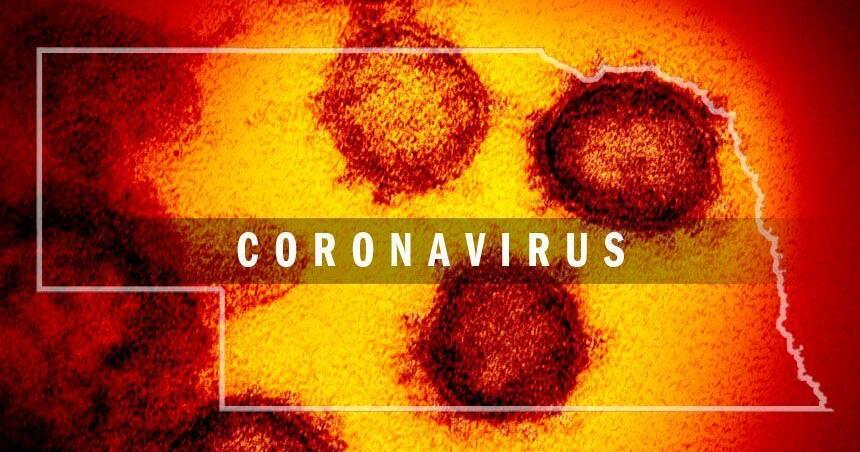Table of Contents
Nebraska hit a new all-time high for COVID cases last week, but the pace of growth slowed. And hospitals across the state continued to see more coronavirus cases.
As we approach two years with COVID-19, medical understanding of the virus and disease continues to grow.
As doctors have learned more about the virus, guidance has changed even as misinformation has flourished. In an effort to provide solid information, The World-Herald, in partnership with the University of Nebraska Medical Center, is soliciting reader questions about COVID-19.
This week’s answers were provided by Dr. Mark Rupp, chief of the UNMC Division of Infectious Diseases and medical director of epidemiology and infection control at Nebraska Medicine; Dr. Andrew Vasey, assistant professor of internal medicine at UNMC and physician leader of the Primary Care Clinical Program; and Dr. Chad Vokoun, associate professor and chief of the Division of Hospital Medicine at UNMC.
What is COVID-19 long-haul syndrome?
COVID “long-haul syndrome” refers to the condition in which people continue to experience symptoms weeks or months after recovering from acute COVID-19. Some of the more common long-hauler symptoms are fatigue, malaise, headache, shortness of breath, neurocognitive problems known as “brain fog” and postural orthostatic tachycardia — rapid heartbeat and other symptoms upon standing. However, nearly all organ systems and various symptoms have been involved with the syndrome.
People are also reading…
How often does COVID-19 long-haul syndrome occur?
Some studies show that as many as 25% to 33% of people have one or more symptoms four or more weeks after recovering from acute COVID-19. Although persistent symptoms are more common in those with more severe illness, the long-haul syndrome can occur in those with even mild disease and in all age groups. We are continuing to gain experience with COVID-19, and we now have seen patients with long-haul symptoms persisting for greater than a year. In some people, we fear these conditions may be very long lasting or permanent.
What can one do to prevent long-haul syndrome from occurring with omicron?
We have not had enough experience with the omicron variant to know whether the incidence of long-haul syndrome will be different from previous variants. However, based on our experience with COVID-19 to date, some people infected with omicron will have lingering symptoms. The good news is that the COVID-19 vaccine not only decreases the risk of severe infection, hospitalization and death, but may also decrease the risk of long-haul syndrome. According to the Nebraska Department of Health and Human Services, in December 2021, Nebraskans who were vaccinated and boosted were 46 times less likely to be hospitalized for COVID-19 than Nebraskans who were not fully vaccinated. A recently peer-reviewed study from the U.K. showed that people who had received two doses of COVID vaccine were about half as likely to report lingering symptoms.
If I experience COVID-19 long-haul syndrome from the omicron variant, should I get vaccinated?
With the other variants, there are case reports of people’s post-COVID long-haul symptoms going away after getting vaccinated. So, if a person does get long-haul symptoms after omicron and hasn’t been vaccinated, getting vaccinated after acute illness recovery may give additional benefits.
What are the best practices to reduce the time being sick?
Not much can help reduce time being sick. Most treatments are symptomatic and are the same things used for other viral upper respiratory tract infections — staying hydrated, getting rest, taking acetaminophen (Tylenol) or ibuprofen (Motrin) for fever and pain. For people at higher risk (those with weakened immune systems, pregnant women, underlying cardiorespiratory disease, etc.), other therapies, although in short supply, can potentially reduce symptoms/prevent hospitalizations (sotrovimab, outpatient remdesivir, nirmatrelvir/ritonavir, molnupiravir). Certain other monoclonal therapies used for other variants in the past are not effective against the omicron strain.
In addition, it is smart to keep your body as healthy as possible so if you do contract COVID-19, you’ll be better prepared to fight it. Eat a well-balanced diet and consider a multivitamin/mineral supplement, get plenty of rest, try to avoid stress, exercise moderately, stop smoking. Particularly during the winter, when we are not exposed to as much sunlight, think about taking a vitamin D pill. Also, try to prevent other illnesses — get your flu shot.
Responses from UNMC medical and public health professionals are general, and are not intended as individual medical advice. Individual medical questions, particularly in cases of current illness or symptoms, should be addressed by an individual’s medical professional.
Send your questions to Executive Editor Randy Essex — [email protected] — and we’ll forward the best ones to UNMC experts.
Eight long-haul symptoms of COVID-19
Eight long-haul symptoms of COVID-19

Most people who get infected with the coronavirus recover within a few weeks. However, some continue to experience symptoms weeks or even months after they are infected. They have what are known as long-haul symptoms of COVID-19. As such, they are sometimes called COVID-19 long-haulers. Sometimes, even patients who had a mild or asymptomatic coronavirus infection can become long-haulers.
Scientists want to learn more about who becomes a long-hauler and why. This knowledge can help shape public policy, and determine the best standards of care and precautions to prevent viral transmission of the disease.
An advocacy group called Patient-Led Research for COVID-19 released its first report in May 2020, to provide an in-depth look at the experiences of more than 600 COVID-19 long-haulers. Susannah Fox, who studies online communities of patients with chronic conditions, told MIT Technology Review in August 2020 that such patient groups will be more important to health professionals, particularly during crises such as the coronavirus, that cause health professionals to be overwhelmed.
“The future of health care and technology is being built on such communities,” Fox said. She added that some of the earliest users of online bulletin boards and other online communities were patients with chronic diseases.
Cognitive FX compiled a list of long-term COVID-19 symptoms based on research and data from experts at institutions across the world, including the Centers for Disease Control and Prevention, Mayo Clinic, Northwestern University, and New York-Presbyterian/Columbia University.

Altered sense of smell and taste

Among 100 people who presented to Northwestern Memorial Hospital’s Neuro-COVID-19 clinic in Chicago, with symptoms compatible with the Infectious Diseases Society of America COVID-19 guidelines, 59% reported dysgeusia, or an impaired sense of taste, and 55% reported anosmia, or an altered sense of smell. The patients were seen at the hospital, which operates in a partnership with Northwestern University’s Feinberg School of Medicine, an average of five to six months after the onset of COVID-19 symptoms. Dysgeusia and anosmia may be the result of viral invasion of the olfactory cortex, the part of the brain associated with the sense of smell and taste.
Difficulty breathing

Dyspnea, or difficulty breathing, is the most common long-haul symptom of COVID-19. More than 40% to almost 70% of patients with COVID-19 report having trouble breathing 60 to 100 days after diagnosis or hospitalization. Dyspnea has been linked to viral damage of the alveolar and epithelial cells in the lungs, and inflammatory damage to vascular cells. Researchers have found corticosteroids may help some long-haul COVID-19 patients with residual lung inflammation or persistent inflammatory interstitial lung disease.
More frequent blood clots

The coronavirus that causes COVID-19 can make blood cells more likely to coagulate, or clump and form clots. Specifically, heart damage caused by COVID-19 is likely the result of clots in the small vessels, or capillaries, in the heart. The risk of blood clots in those with long-haul COVID-19 may be associated with damage from severe inflammation, although scientists don’t know how long the inflammation can persist. Doctors might want to treat blood clots in those with long-haul COVID-19 with low-molecular weight heparin and direct oral anticoagulants versus vitamin K antagonists, because patients taking vitamin K antagonists need frequent blood tests to monitor medication levels.
Trouble sleeping

Patients with long-haul COVID-19 may develop or will continue to experience neuropsychiatric symptoms, including insomnia, or sleeplessness, for months after they are initially infected. These symptoms may be the result of nerve cell damage due to inflammation. Levels of immune system activation are directly associated with cognitive and behavioral changes. Although little compelling evidence exists that the coronavirus that causes COVID-19 infects neurons, autopsies have found evidence that the virus causes changes in the brain that promote inflammation in nerve cells and blood vessels in the brain. Inflammaging, the chronic low-level brain inflammation that develops with age, may also play a role in the persistent psychiatric effects of COVID-19.
Lightheadedness

Dizziness, sometimes called vertigo, has long been associated with viral infections. So researchers are not really surprised that studies from around the world have found vertigo is one of the most common symptoms of COVID-19. Scientists in Pakistan believe that the coronavirus enters the nervous system via the circulatory system, and binds to the angiotensin-converting enzyme 2 receptors in the lining of the capillaries in the brain. Hypoxia, or insufficient oxygen delivery, and damage caused by blood clots and inflammation are other possible ways nervous system damage can cause vertigo in those with long-haul COVID-19.
Strain after physical or mental work

Scientists do not know much about what causes post-COVID-19 fatigue, also called post-exertional malaise or chronic fatigue/myalgic encephalopathy, following viral infection. One possible explanation is that while the body fights off the coronavirus, the immune system releases proteins that promote inflammation and can stimulate the immune response. These proteins are called cytokines, and they are also responsible for the symptoms of post-COVID-19 fatigue. However, cytokine levels sometimes do not return to normal and cause ongoing symptoms.
Chest pain and heart palpitations

Viral infection, inflammation and the immune response, and a decrease in the number of, or downregulation of, angiotensin-converting enzyme 2 receptors may be the root cause of chest pain and heart palpitations in those with long-haul COVID-19. Infection, inflammation, and the downregulation of ACE2 receptors damage the heart muscle; the pericardium, or the sac around the heart; and the conduction system that controls the heartbeat by conducting electrical impulses through the heart. Scarring of the heart muscle can lead to palpitations, or arrhythmias, as can cytokines, which are proteins that stimulate the immune response and promote inflammation.
This story originally appeared on Cognitive FX and was produced and distributed in partnership with Stacker Studio.







More Stories
The Power of Sleep and Monotasking: Unlocking Your Concentration Potential
Natural Looking Botox Injections for Anti-aging
Exploring the Different Types of Back Pain Treatments